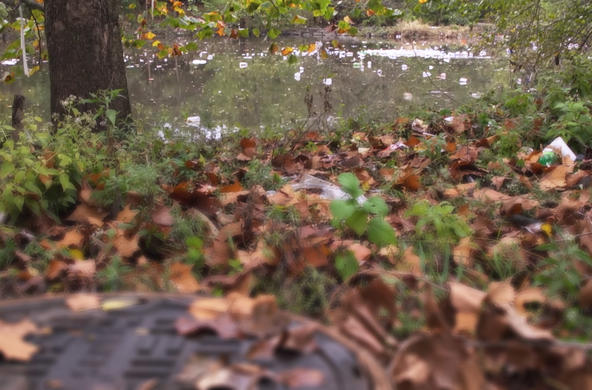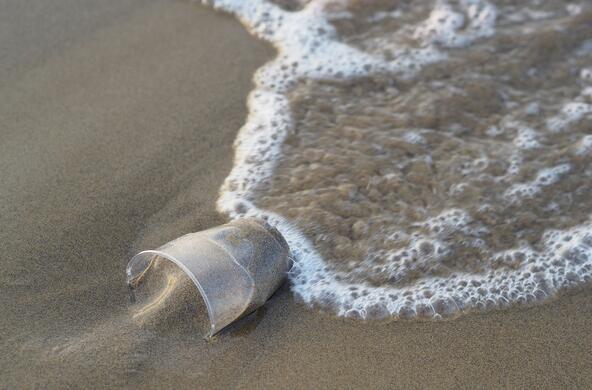With some 350 million tons of plastic produced each year, it is not surprising that some of it escapes to the environment. Much of the plastic is used in products with a one-time or short lifespan, such as containers and wrappings. Often we can see the dispersal of these plastics – grocery bags caught in tree branches and drink bottles lining roadsides, waterways and beaches. What is more difficult to see is the widespread use of plastics in textiles, that are broken down during washing and drying, releasing fibers to the air or water.
Many of the larger forms of plastic that we see easily are degraded by sunlight and abrasion to form microplastics. The fibers from textiles and nylon rope also degrade in sunlight to form microparticles of plastic, usually less than 20 micrometers in diameter, and thus dispersed widely. I’ve blogged before on the use of nylon and polypropylene in fishing lines that are often cast to the sea after use.
There are numerous reports of plastic microparticles in the oceans. Most of us are aware of plastic microfibers as a contaminant in water. Now, one recent study has measured the deposition of plastic particles from the atmosphere at 11 national parks across the western US, chosen to be remote from local human influence. Most of the particles were dispersed by wind and deposited during dry conditions. The plastic deposition in these areas averaged 132 plastic particles per square meter per day, totaling about 2 mg/m2/yr. Rocky Mountain National Park led the list with 435 plastic particles/m2/day. While this is only a small percentage of the average deposition of dust in remote areas, the deposition of plastics is entirely of human origin. Small particles of plastic in the air, inhaled by humans, could cause lesions in the respiratory system. As in the oceans, small particles deposited on land get into the foods we eat with unknown consequences on our health.
Microparticles of plastic have global dispersal and are found in the organism of remote areas. At Svalbard, an arctic island at 80°N, 87% of the Northern Fulmars, a predatory seabird had plastic in their intestinal tract, and microparticles of plastic were recently reported in soil microfauna that fed on degrading plastics delivered as flotsam to Antarctica.
In the oceans, the average plastic item degrades to microparticles in about 20 days. We can assume similar degradation rates apply to plastics discarded on land. The microparticles in soil and sediments may persist indefinitely, casting a sedimentary record of human activity on the planet beginning about 50 years ago. We will leave a marker of modern human activity in the geologic record, but more important, widespread dispersal of plastic particles in nature may have serious consequences for our health.
References
Bergami, E., E. Rota, T. Caruso, G. Birardia, L. Vaccari, and I. Corsi. 2020. Plastics everywhere: first evidence of polystyrene fragments inside the common Antarctic collembolan, Cryptopygus antarcticus. Biology Letters doi: 10.1098/rsbl.2020.0093
Brahney, J., M. Hallerud, E. Heim, M. Hahnenberger, and S. Sukumaran. 2020. Plastic rain in protected areas of the United States. Science 368: 1257-1260.
Hale, R.C., M.E. Seeley, M. J. La Guardia, L. Mai, and E.Y. Zeng. 2020. A global perspective on microplastics. Journal of Geophysical Research, Oceans doi: 10.1029/2018JC014719
Lawrence, C.R. and J.C. Neff. 2009. The contemporary physical and chemical flux of aeolian dust: A synthesis of direct measurements of dust deposition. Chemical Geology 267: 46-53.
Machado, A. A. S. and 4 others. 2018. Microplastics as an emerging threat to terrestrial ecosystems. Global Change Biology doi: 10.1111/gcb.14020
Prata, J.C. 2018. Airborne microplastics: Consequences to human health? Environmental Pollution 234: 115-126.







